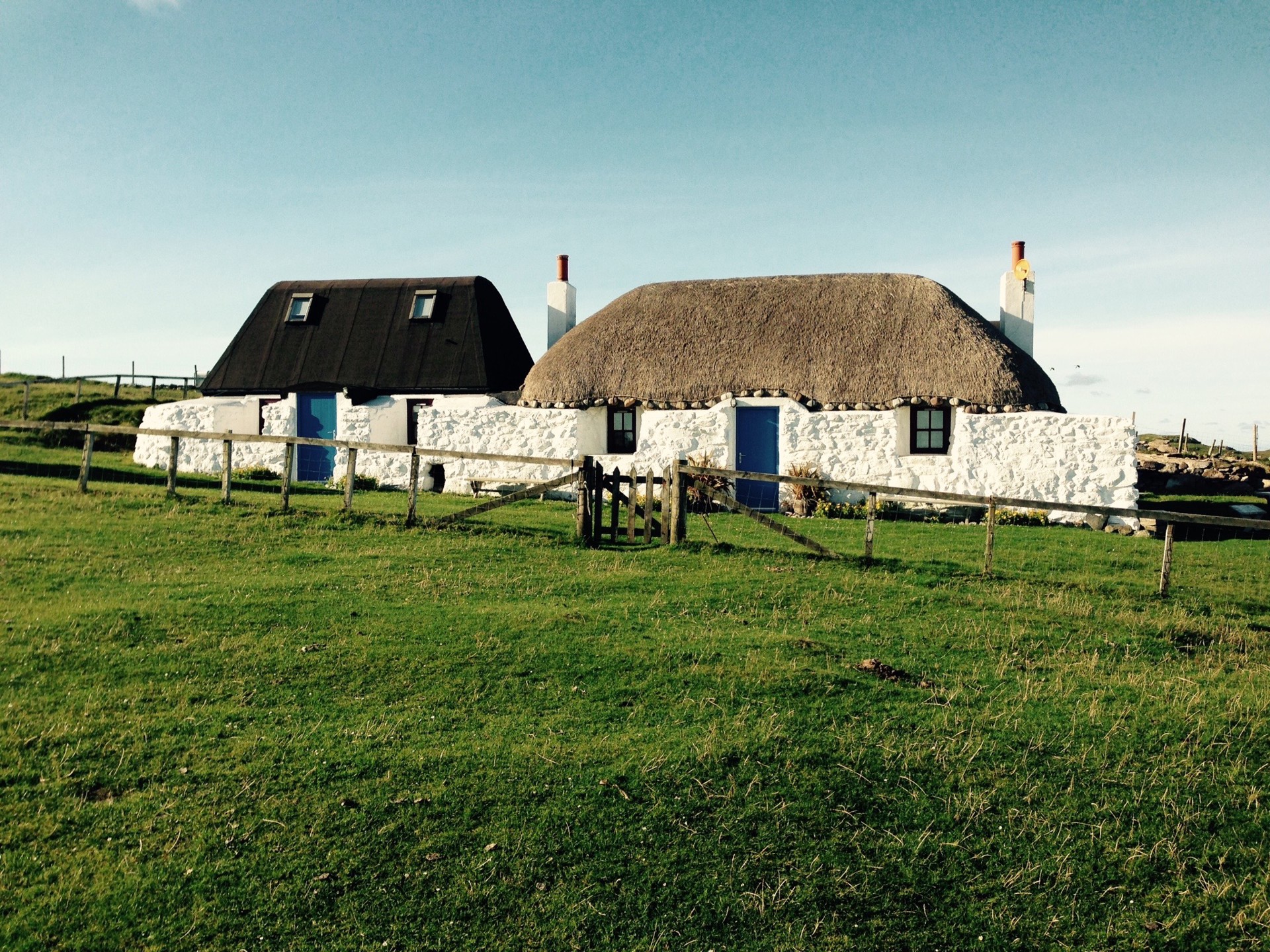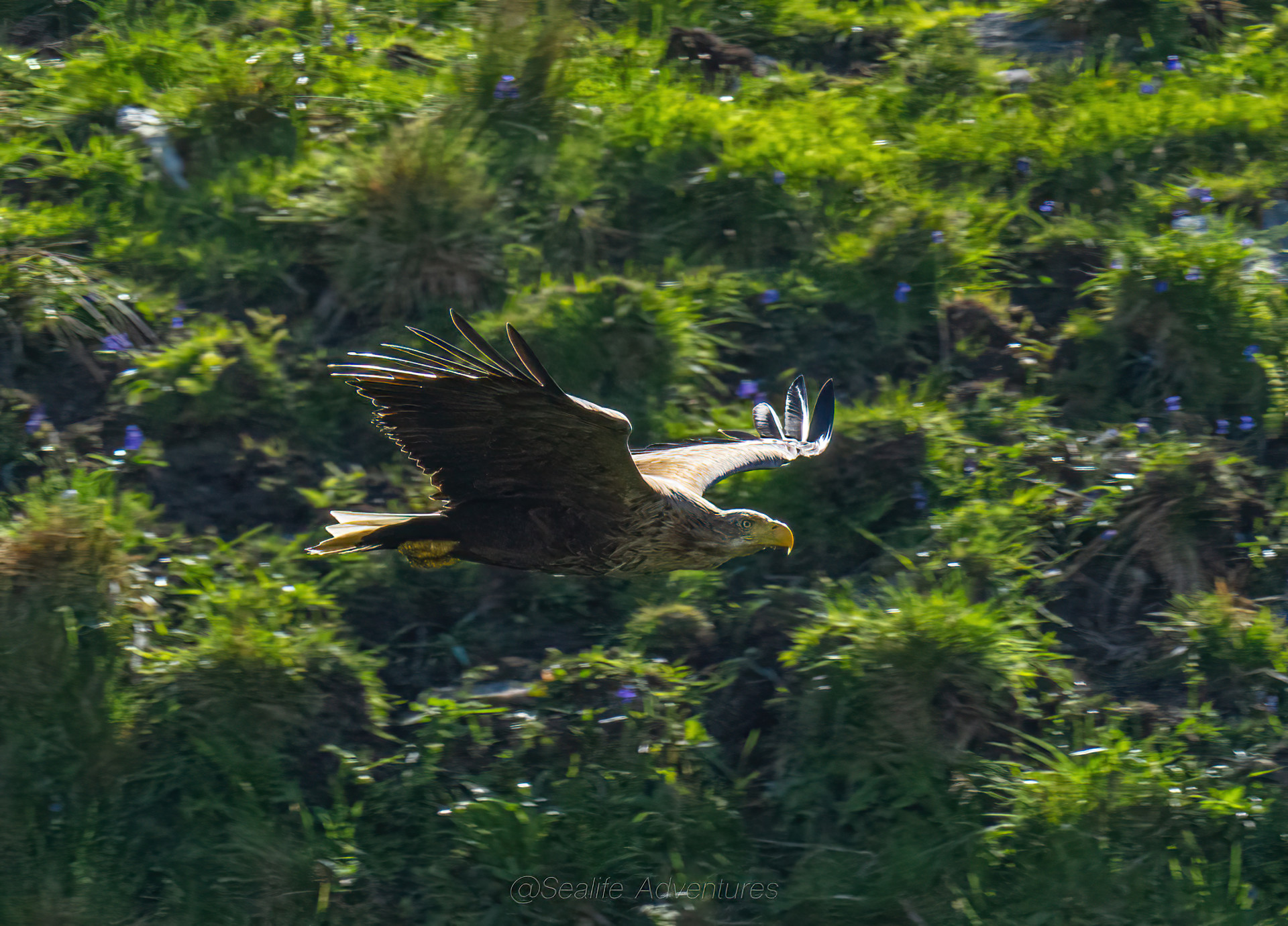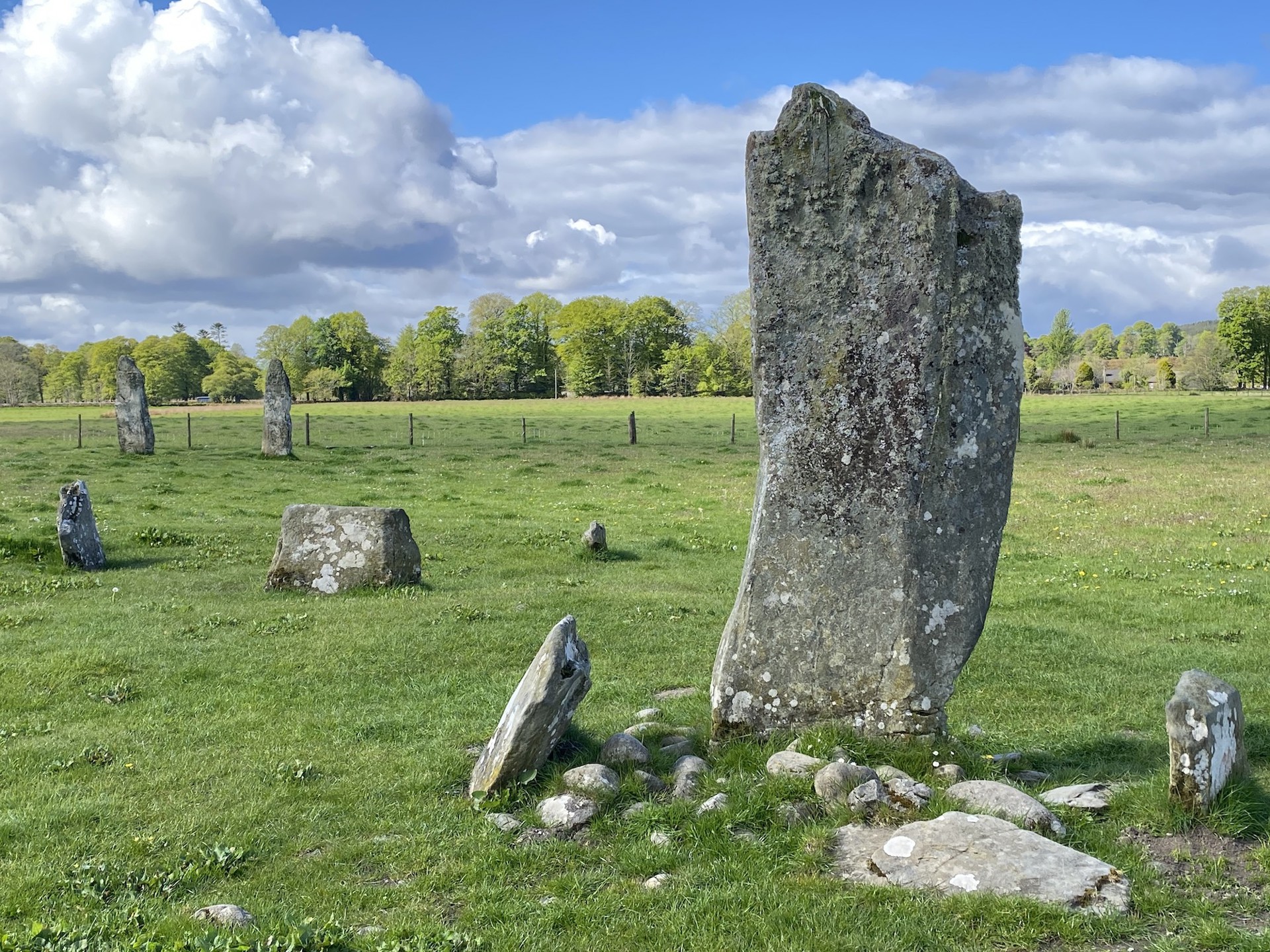1. Tiree’s Ringing Stone
Tiree’s Ringing Stone (Clach a’ Choire) is situated between Balephetrish and Vaul. This large glacial erratic boulder (i.e. one that is different to the rocks around it) balances on other rocks like an egg on a spoon and emits a metallic ring when struck gently. It was probably brought here from Rum during the last Ice-Age some 11,000 to 13,000 years ago. It has many prehistoric cup-marked indentations, thought to have been carved up to 4,500 years ago during the Neolithic period. According to folklore, the stone was thrown by a giant from Mull, and should it ever be removed from Tiree, the island will sink into the sea and be lost forever.
2. Iron Age Fortresses
Over twenty fortresses from the Iron Age survive on Tiree. Most of these stand on inaccessible crags and are visible from each other. Warning of attack may have been passed from one to the other. The best examples of forts on the island can be seen at Dùn na Cleite (fort of the pointed hill) at the end of Happy Valley and at Dùn Shiadair (fort of the shieling) in West Hynish.
3. Iron Age towers
Tiree is also home to two Iron Age brochs, hollow-walled drystone towers that are only found in Scotland. Dùn Mòr Bhalla (the big fort of Vaul) is the best example of a broch on Tiree and the only prehistoric structure on the island that has been properly excavated. Originally, the broch had a double wall with an inner staircase leading to two or three galleries. The other broch, Dùn Mòr a’ Chaolais (the big fort of Caolas), stands on the hill above Milton harbour.
4. St Columba Heritage
Tiree has a strong connection with St Columba, the Irish monk who founded the monastery on Iona in 563 AD. The island provided the monastic community on Iona with grain and its name is derived from Tìr Iodh, 'land of the corn'. A number of early monasteries once existed on Tiree itself, and several sites have stone cross-slabs from this period. Adomnan, abbot of Iona Abbey from 679 to 704, recorded several stories relating to St Columba and the island of Tiree. In one story, Columba instructed a monk to go the monastery on Tiree and do penance for seven years.
5. Traditional Thatched Houses
Tiree is known for its traditional thatched houses, including 'blackhouses' and 'white houses' as well as its striking 'pudding' or 'spotted houses' where only the mortar is painted white. The style of thatching is unique, using muran (grass) which grows on the sand dunes. Traditionally, the thatch was secured with rope held down with stone weights. The traditional houses generally went out of use on Tiree by the 1950s, but a number have been renovated and are still in use today.
6. Visit Tiree's historical centre
Once you’ve visited all these historic sites, it’s time to head to An Iodhlann, Tiree's historical centre. It offers a fantastic overview of Tiree’s long history – nothing is left uncovered! You’ll find old letters, emigrant lists, maps, reports, photographs, stories and songs in the lively display. You can also find your place in Tiree’s history; An Iodhlann’s resident genealogist can help you discover your Tiree family links.
Walking is a great way to visit these historic sites. There are a number of routes that take in Tiree’s natural beauty, wildlife and heritage attractions.



